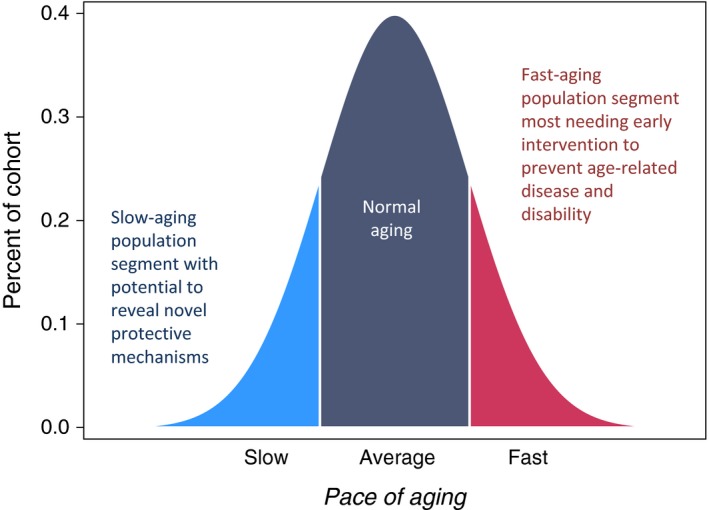Figure 1.

Subgroups of normally distributed human pace of aging relevant to design of trials for healthspan‐extension therapies. Pace of aging is the rate of coordinated decline in the integrity of bodily systems occurring with advancing chronological age. We showed that variation in the pace of aging could be quantified already in individuals still too young to have age‐related disease by tracking changes in biomarkers of organ system functioning over time (Belsky et al., 2015a). We earlier reported that individuals whose physiology changed more slowly with the passage of chronological time (light blue segment of distribution) experienced better physical and cognitive functional outcomes in aging, and also showed fewer subjective signs of aging. The opposite was true of those whose physiology changed more rapidly (red segment of distribution). Both slower‐aging and faster‐aging population segments are needed in research to develop healthspan‐extension therapies. Slower‐aging populations may provide clues to novel therapeutic targets. Faster‐aging populations are those who therapies must benefit.
